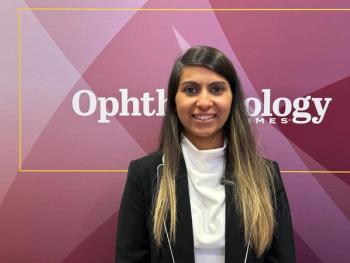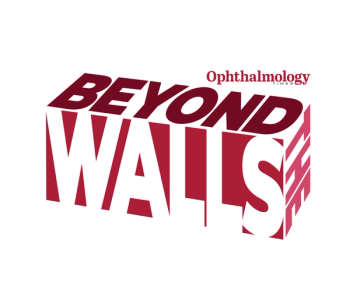
Corneal ectasia: Effects of epi-on and epi-off CXL
Fine-tuning of the crosslinking procedure is producing better end results for patients.
This article was reviewed by Karolinne M. Rocha, MD, PhD
The changes to the eye caused by ectasia are profound and comprehensive-with shape, structure, strength, and sight affected.
In advanced disease, the changes in corneal shape are marked and the clinical findings are visible during slit-lamp evaluation. The corneal structure is affected extensively by significant epithelial hyperplasia that fills the space and compensates for the characteristic stromal loss.
Related:
Biomechanical changes occur early in the disease process and are essential for determining the corneal geometric and optical properties. Finally, progressive disruptions in sight are manifested clearly by the worsening of the point spread function on topographic evaluation, according to Karolinne M. Rocha, MD, PhD, assistant professor of ophthalmology, and director, corneal and refractive surgery, Storm Eye Institute, Medical University of South Carolina, Mount Pleasant, SC.
Epi-on, epi-off
The goal in keratoconus is treatment with crosslinking (CXL) as early as possible when progression becomes evident. The epi-off procedure is the current gold standard treatment with proven efficacy and more than 10 years of follow-up.
The classic Dresden protocol, Dr. Rocha recounted, is application of 0.1% riboflavin-5-phosphate with 30 minutes of soaking and 20% dextran during a 30-minute exposure time to 370 nm of ultraviolet (UV) A light with an irradiance of 3 mW/cm2.
“The three main components of the CXL procedure are riboflavin, UV light, and the drug,” she noted. “The stromal availability of all the components impact the efficacy of the CXL procedure.”
Related:
Dr. Rocha demonstrated the structural changes in the collagen fibers that occur following the epi-off procedure. In contrast, the epi-on CXL procedure can be performed in patients with a corneal thickness less than 400 μm. This procedure is advantageous in that it improves patient comfort with more rapid return to normal daily activities and reduces the risk of infection, she explained.
However, a meta-analysis of epi-on techniques reported inconsistent efficacy.
“Studies reported improved maximum keratometry values, but in some cases keratoconic progression was evident,” she said.
Related:
A closer look highlighted some problems with the procedure. The epi-on procedure is more challenging than the epi-off procedure because obtaining the optimal levels of the components is more challenging with the epithelium in place. Notably, the epithelium can block both the stromal loading of the riboflavin and the UVA light but mostly affects the oxygen level.
An adequate oxygen level is paramount to the success of CXL.
“As soon as the UV light is turned on, the oxygen is consumed rapidly and an extended period is required for the oxygen level to recover,” Dr. Rocha said.
Related:
In addition, a significant biomechanical effect of CXL is dependent on oxygen. She noted with a normal oxygen level, better changes in the corneal biomechanics are seen compared to what happens when the oxygen level is low.
One approach to address this problem was attempted by adding supplemental oxygen. Dr. Rocha noted that the result was that supplemental oxygen enabled sustained aerobic CXL under high-irradiance UVA light delivery.
Phase III study
The end of the phase III multicenter registration study of epi-on CXL is near. In this randomized, sham-controlled trial, the control eyes can undergo CXL after six months. About 275 eyes with progressive keratoconus are included in patients ranging in age from 12 to 55 years. Patients are treated with transepithelial riboflavin ophthalmic solution with a 10-minute soaking time, supplemental oxygen is supplied, and an accelerated UV protocol (10 J/cm2) is used.
The primary endpoint is a 1-D difference between the treatment group and controls in the mean change in the Kmax value from baseline at the six-month time point. The results have not yet been reported.
Related:
State of the art in CXL
The best way to achieve most corneal flattening is by combining the epi-off conventional protocol with implantation of corneal implants (Intacs, Addition Technology).
The epi-off procedure is safe and the efficacy is established and approved by the FDA. The epi-on procedure provides rapid recovery, less pain, and less risk for the development of haze and infection.
“In CXL, the future is bright and the results have improved as a result of oxygen supplementation, pulsed accelerated protocols, and iontophoresis,” Dr. Rocha concluded.
Karolinne M. Rocha, MD, PhD
E: [email protected]
This article is based on Dr. Rocha's presentation at the American Academy of Ophthalmology's annual meeting. Dr. Rocha has no financial interest in any aspect of this report.
Newsletter
Don’t miss out—get Ophthalmology Times updates on the latest clinical advancements and expert interviews, straight to your inbox.
















































.png)


